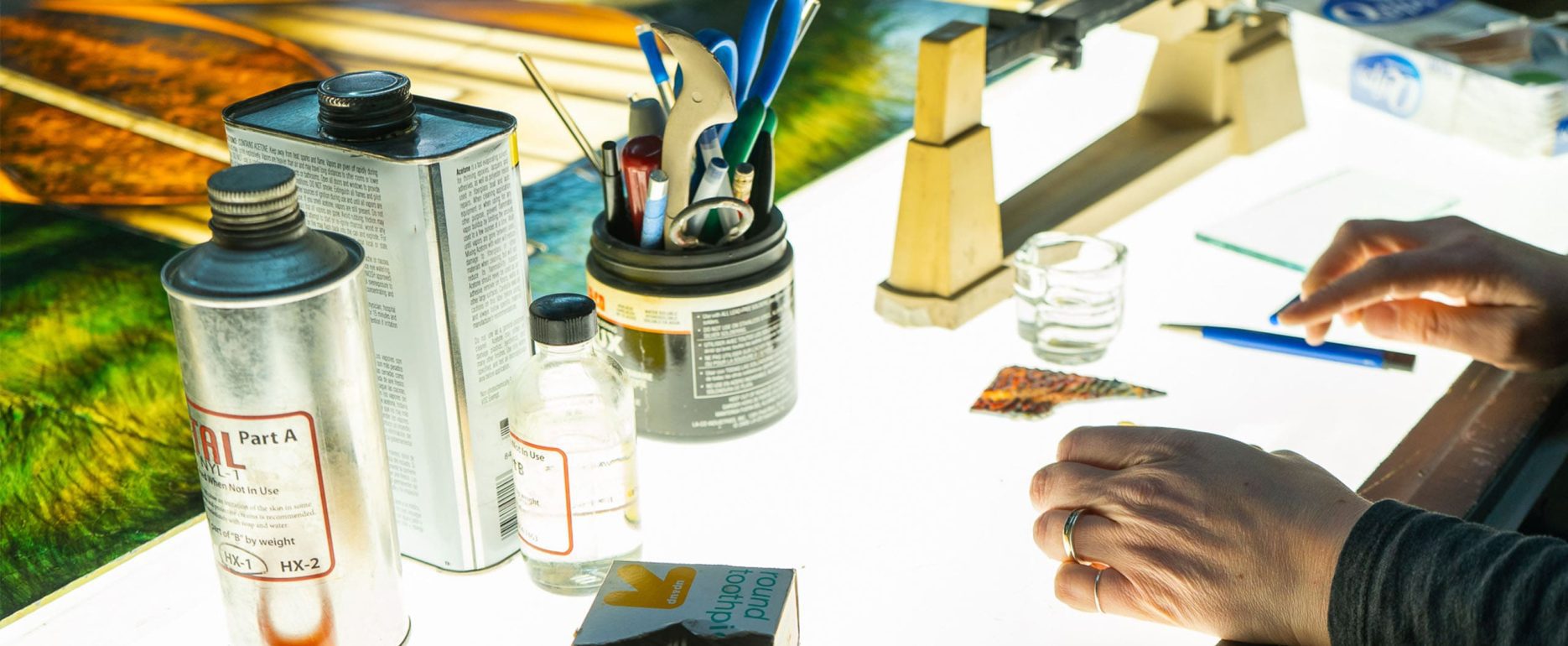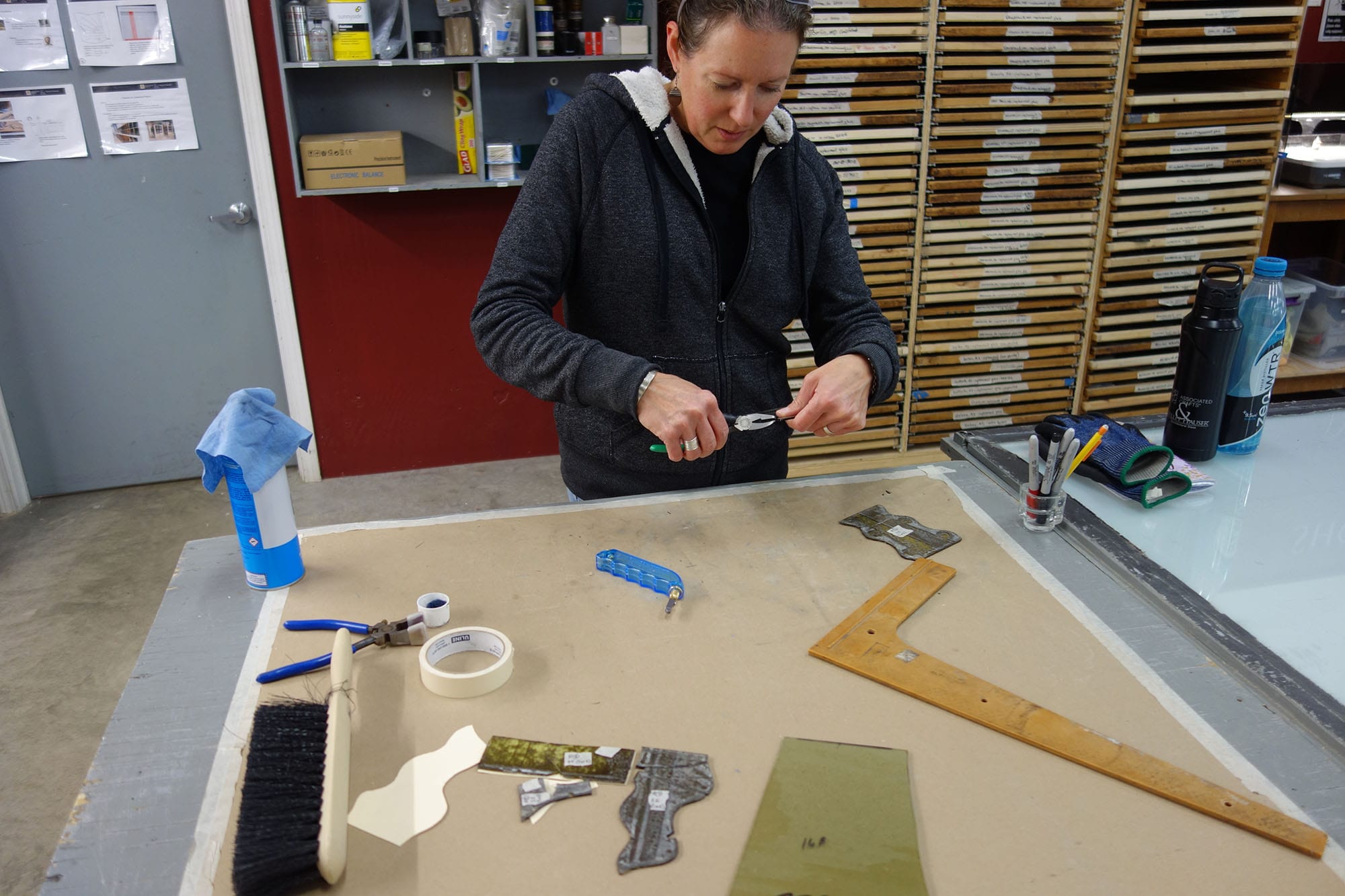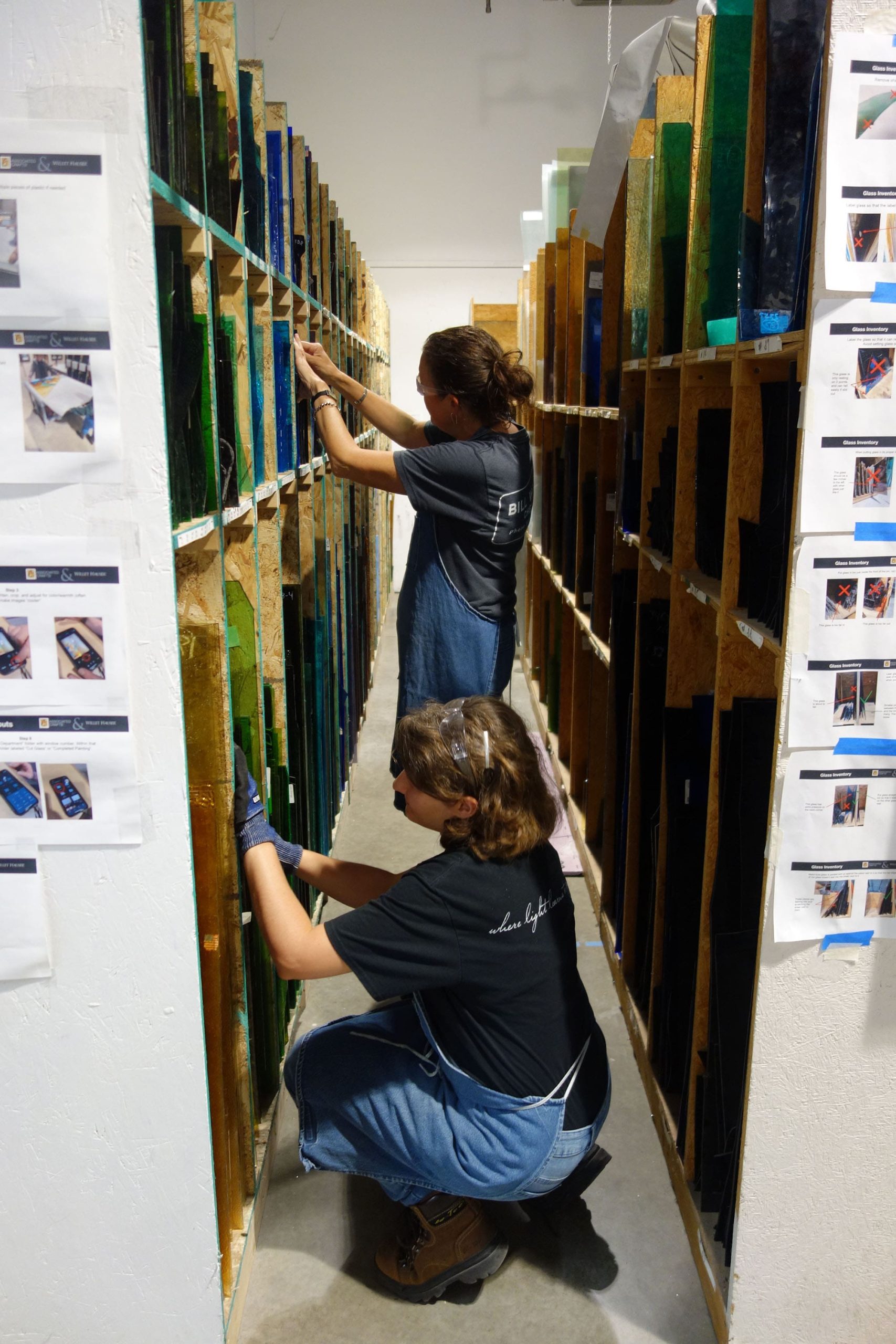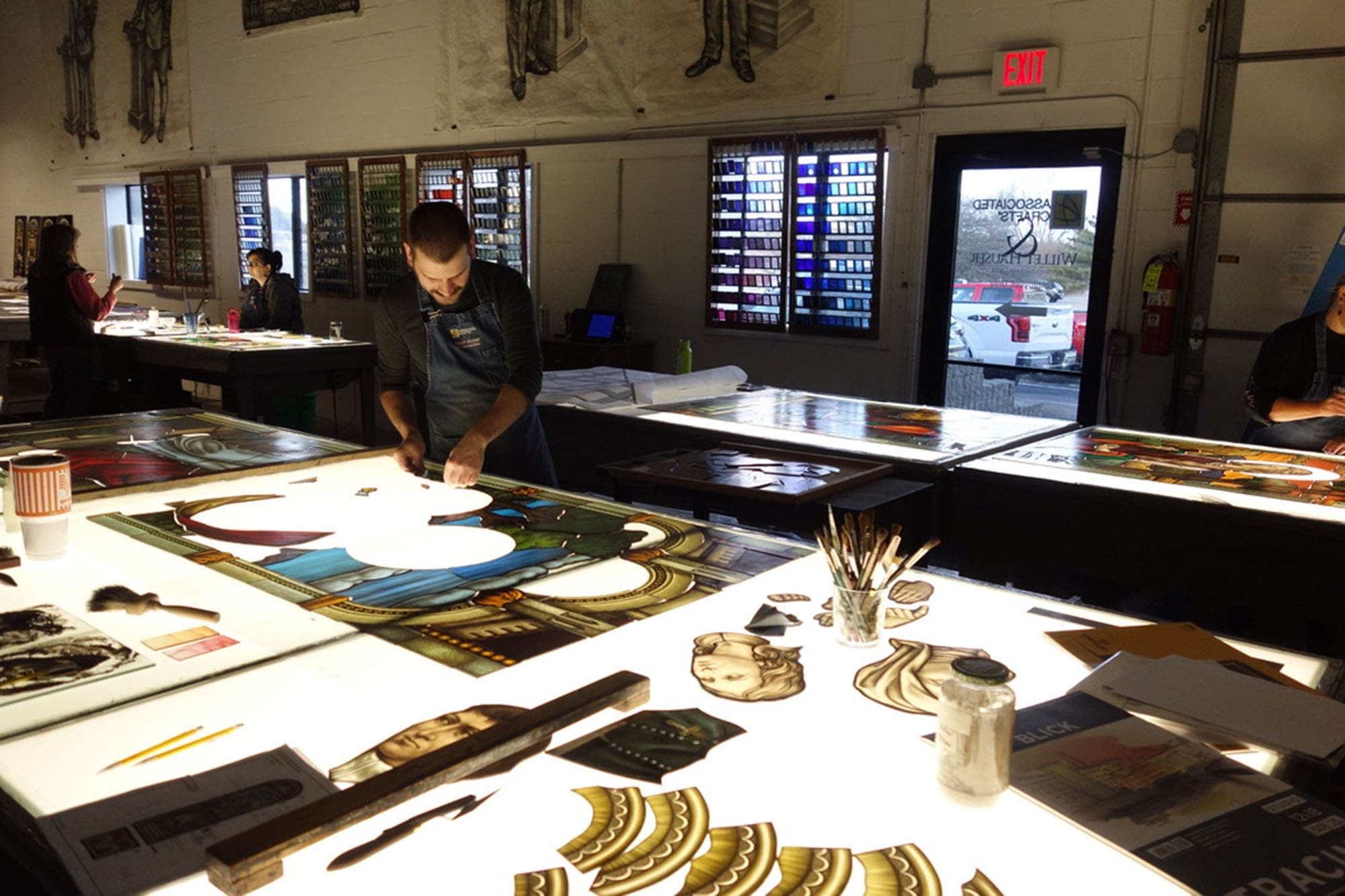
When a centuries-old stained glass window begins to show its age, what’s at stake isn’t just its structural integrity, but its story. These windows are more than decorative elements; they are historical and artistic treasures, each pane a portal into a bygone era. Restoring old stained glass windows demands a harmonious blend of artistry, science, and historical knowledge – not just to repair, but to honor the legacy they embody.
For architects specializing in historic buildings and church leaders, the restoration process can be as complicated as the intricate designs themselves. Challenges range from sourcing the right materials to navigating preservation regulations. However, armed with expertise and a thoughtful approach, stained glass can once again shine as the centerpiece of your project. At Willet Stained Glass Studios, with more than 125 years of experience, we’re here to share insights into the delicate art and science of restoration.

Understanding the Challenges of Stained Glass Restoration
1. Sourcing Period-Appropriate Glass and Materials
One of the first and most daunting steps in restoring old stained glass windows is sourcing the right materials. Modern glass often lacks the texture and variance of antique panes. At Willet, we rely on partnerships with specialty glassmakers who replicate traditional techniques to craft glass that preserves historic charm. Whether it’s opalescent glass or rich cathedral glass, sourcing high-quality, authentic materials is key to maintaining the visual integrity of any restoration.
Additionally, the choice of lead came (the metal strips that hold the glass pieces together) is critical. Lead that matches the historical profile ensures structural and aesthetic uniformity, while advancements in alloy metals improve long-term durability.
To achieve a truly authentic restoration, attention must also be given to the tools and techniques used in creating or repairing stained glass. Traditional handcrafting methods, such as hand cutting glass and assembling pieces with precise soldering, are essential to reproducing the skilled artistry of the period. Modern technologies, such as laser-precise cutting tools, can assist in some cases, but the value of human craftsmanship remains unparalleled when recreating the organic imperfections and intricate detailing that define historic stained glass.
Equally important is the consideration of patina and aging within the restoration process. Newly restored stained glass often risks appearing too pristine, disrupting the harmony of the surrounding historic architecture. To counter this, subtle patination techniques can be applied to lead and other materials, lending a gentle weathered appearance that blends seamlessly with the original work. This careful balance between restoration and preservation ensures the stained glass not only remains stunning but also stays true to its historical narrative.
Finally, collaboration with skilled artisans and conservation experts provides a foundation for success whenever restoring old stained glass windows. These professionals bring not only technical expertise but also a deep understanding of art history and architectural context. Their contributions ensure that the restored pieces transcend functionality, embodying the spirit and craftsmanship of their era while standing resiliently into the future. A thoughtful, meticulous approach respects both the artistic essence and the structural integrity that have allowed these masterpieces to endure through centuries.
2. Addressing Structural Instability
Stained glass windows naturally weaken under the weight of time. Environmental factors such as fluctuations in temperature, water infiltration, and gravity can compromise their structural stability. Left unchecked, this can lead to buckling, cracking, and eventual collapse.
Our approach incorporates non-destructive evaluation (NDE) methods to assess a window’s hidden weaknesses without causing further damage. Using advanced imaging techniques, we identify stress points and weak joints, allowing precise intervention. Additionally, computer modeling simulates the window’s structural behavior, helping us implement reinforcement strategies to ensure your window stands strong for decades to come.
This meticulous approach is complemented by a commitment to preserving the aesthetic and historical integrity of each structure. By combining technical precision with an artist’s eye for detail when restoring old stained glass windows, we ensure that every intervention not only enhances the window’s stability but also respects its original design. Whether it’s a centuries-old stained glass masterpiece or a modern architectural feature, our goal is to maintain the harmony between form and function.
Furthermore, our team employs environmentally conscious solutions, sourcing sustainable materials and using repair methods that minimize waste. Restorative efforts, when carried out responsibly, not only extend the life of the structure but also contribute to reducing the environmental impact of replacement and disposal. This holistic methodology reflects our dedication to balancing durability and sustainability in every project we undertake.
Our process also prioritizes collaboration and transparency, working closely with architects, preservationists, and property owners to tailor solutions to the unique needs of each window. This partnership ensures that every detail – be it the choice of reinforcing materials or the design of a glazing pattern – is thoughtfully executed. With this carefully curated approach, we guarantee results that stand as a testament to both engineering innovation and timeless craftsmanship.
3. Replicating Traditional Techniques
Restoring old stained glass windows is not just about technical repair; it’s about artistry. Seamlessly repairing or replacing damaged sections requires an intimate understanding of traditional craftsmanship. Our artisans replicate medieval leading methods, hand-paint intricate details using vitreous paints, and kiln-fire glass to fuse legacy techniques with precision.
For example, when working on religious iconography or detailed floral designs, it’s not just the colors but the brushstrokes, texture, and light diffusion of the original artist that we aim to reproduce. Every stroke and soldered joint is a tribute to their mastery, ensuring the final piece reflects the same visual and emotional impact as it did when first installed.
Beyond preserving the aesthetic of historical stained glass, our work also ensures its structural integrity for generations to come. Over time, the delicate nature of lead came and the natural weathering of glass can lead to instability. Through a meticulous process of disassembly, cleaning, and renewal, we replace degraded materials while maintaining the authenticity of the original design. This delicate balance between restoration and preservation demands precision, patience, and a profound respect for the artistry of the past.
Equally as important is our commitment to marrying traditional techniques with modern innovations in glass craftsmanship. By carefully studying historical construction methods, we can integrate contemporary materials that enhance durability without compromising the visual harmony of the piece. UV-resistant glass coatings, for example, offer protection from sunlight damage, while subtle reinforcements provide additional support to weakened structures. These advanced techniques ensure that stained glass windows continue to captivate viewers as they shimmer in sunlight or glow with the warmth of interior lighting.
Each restoration project tells a story – of its origins, its symbolism, and the hands that first brought it to life. We approach every project not merely as a technical endeavor but as an opportunity to connect with that story and extend its chapter. By bringing renewed vibrancy to faded hues and reinforcing the delicate framework, we do more than restore glass; we restore the essence of a space, inviting it to inspire yet another century of wonder and reverence.

4. Navigating Preservation Guidelines
For architects and church leaders working within historically designated buildings, adhering to strict local, state, or federal preservation guidelines can seem daunting when restoring old stained glass windows. Compliance often requires specific documentation and approval processes, particularly if the stained glass is tied to a listed property.
Our team at Willet has worked closely with preservation boards for more than a century, ensuring every project not only meets but exceeds regulations. From salvaging original materials to crafting detailed restoration plans for approval, we streamline this process, ensuring your vision aligns seamlessly with the standards of historical preservation.
We recognize that preserving stained glass is about more than regulations – it’s about honoring artistry, history, and the stories embedded within each pane. At Willet, we approach every piece with reverence, studying its craftsmanship, materials, and even its imperfections to develop a restoration strategy that retains its original character. Our artisans are deeply skilled in traditional methods, such as lead came replacement and glass painting, while also incorporating cutting-edge technology to ensure the longevity and integrity of the restored work.
For projects involving listed or protected properties, our team provides comprehensive support from concept to completion. We collaborate closely with architects, preservation specialists, and governing boards to produce detailed documentation, including condition assessments, material samples, and mock-ups that showcase how our work will align with preservation guidelines. By acting as both craftsmen and advocates for your vision, we ensure your project navigates each regulatory requirement efficiently, without compromising on quality or artistry.
At Willet, our mission is to bring life back into every stained glass window, reuniting communities with these cherished landmarks while safeguarding their beauty for future generations. Whether restoring an ornate cathedral installation or a unique private commission, we are driven by a commitment to excellence, ensuring our work resonates with those who cherish history and artistic splendor.
5. Honoring Artistic Integrity
When restoring old stained glass windows, authenticity is everything. Preserving the original artist’s voice is not just a technical challenge but a moral directive. This is where modern technology intersects with age-old artistry. By employing custom color-matching technology, we achieve exact hues and tones that mimic centuries of sunlit aging.
For instance, when repairing an amber-tinted panel on an ornate Gothic window, we find not just any amber but the amber that matches the patina influenced by time, weather, and craftsmanship. The goal is to preserve character and nuance while allowing the window to harmonize within its historical context.
Each detail within a restoration speaks to a broader story – one of legacy, artistry, and the delicate balance between preservation and innovation. When working on stained glass from a bygone era, it’s not just the composition of color that requires attention, but also the interplay of light and texture. The surface of the glass, sometimes rippled or sprinkled with tiny imperfections, must be mirrored precisely to maintain the authenticity of its appearance when touched by sunlight. This careful replication ensures that when observers gaze upon the piece, it evokes the same emotional resonance as it did centuries ago.
Furthermore, the craftsmanship involved extends beyond glasswork to the lead came and structural integrity of the piece. The natural aging of metals, from the soft pliability of new lead to the harder lines of well-tempered centuries-old came, demands a methodical and intentional approach. Skilled hands meticulously adjust and shape the materials, respecting both the original artisan’s technique and the architectural environment to which the piece belongs. Every cut and joint must feel seamless – as though time itself has been paused, rather than rewritten.
This fusion of traditional craftsmanship and modern precision creates a harmony that celebrates both past and present. It’s not just a matter of restoration, but of honoring the soul of the artwork. A stained glass window is more than an arrangement of color and light; it’s a bridge through which history, culture, and art continue to speak. To restore it is not only to repair a physical object, but to rekindle its story and allow it to illuminate spaces – both literally and metaphorically – for generations to come.
The Role of Innovation in an Age-Old Practice
While traditional techniques are the backbone of restoration work, modern innovation has become an indispensable ally. Here are key technologies redefining stained glass restoration today:
Advanced Adhesives and Coatings
Developed in collaboration with material scientists, conservation-grade adhesives repair cracked panels without compromising their translucence. UV-resistant coatings provide additional protection against environmental wear, extending the glass’s lifespan.
Training Tomorrow’s Artisans
Restoring old stained glass windows isn’t just about the windows; it’s about people. At Willet, we’ve established artisan training programs to pass on traditional stained glass techniques while incorporating modern advancements. This ensures every project upholds the same level of authenticity and excellence for generations to come.

Real-World Example: Breathing New Life Into History
Take the example of Willet’s work at a 92-year-old historic cathedral. The project began with a thorough structural evaluation. Using NDE imaging, we pinpointed several areas where the panels had weakened over time. Our team carefully disassembled the window in sections, ensuring every piece of original glass was cataloged and preserved.
Damaged pieces were restored with precision, while the lead framework was rebuilt using historically accurate patterns. The ultimate goal was more than repair; it was restoring an irreplaceable story told through geometric motifs and radiant hues. Today, this window sits proudly, not as a relic but as a fully restored masterpiece, ready to inspire for another 90 years.
Craftsmanship Meets Care
Restoring old stained glass windows is more than a technical endeavor; it’s about honoring history while preparing it for the future. Every piece of glass, every detail of leadwork, and every brushstroke must stay true to the artistry and vision of the past. At Willet Stained Glass Studios, we live and breathe this legacy, blending expertise with passion to preserve the beauty of stained glass for generations to come.
If you’re facing challenges with stained glass restoration or have a historic building that deserves a light-filled transformation, we’re here to help. From free inspections to meticulous craftsmanship, Willet is your partner in preserving the art and science of stained glass.
Contact us today for a free inspection and appraisal and see how we can help your vision shine brighter than ever.







